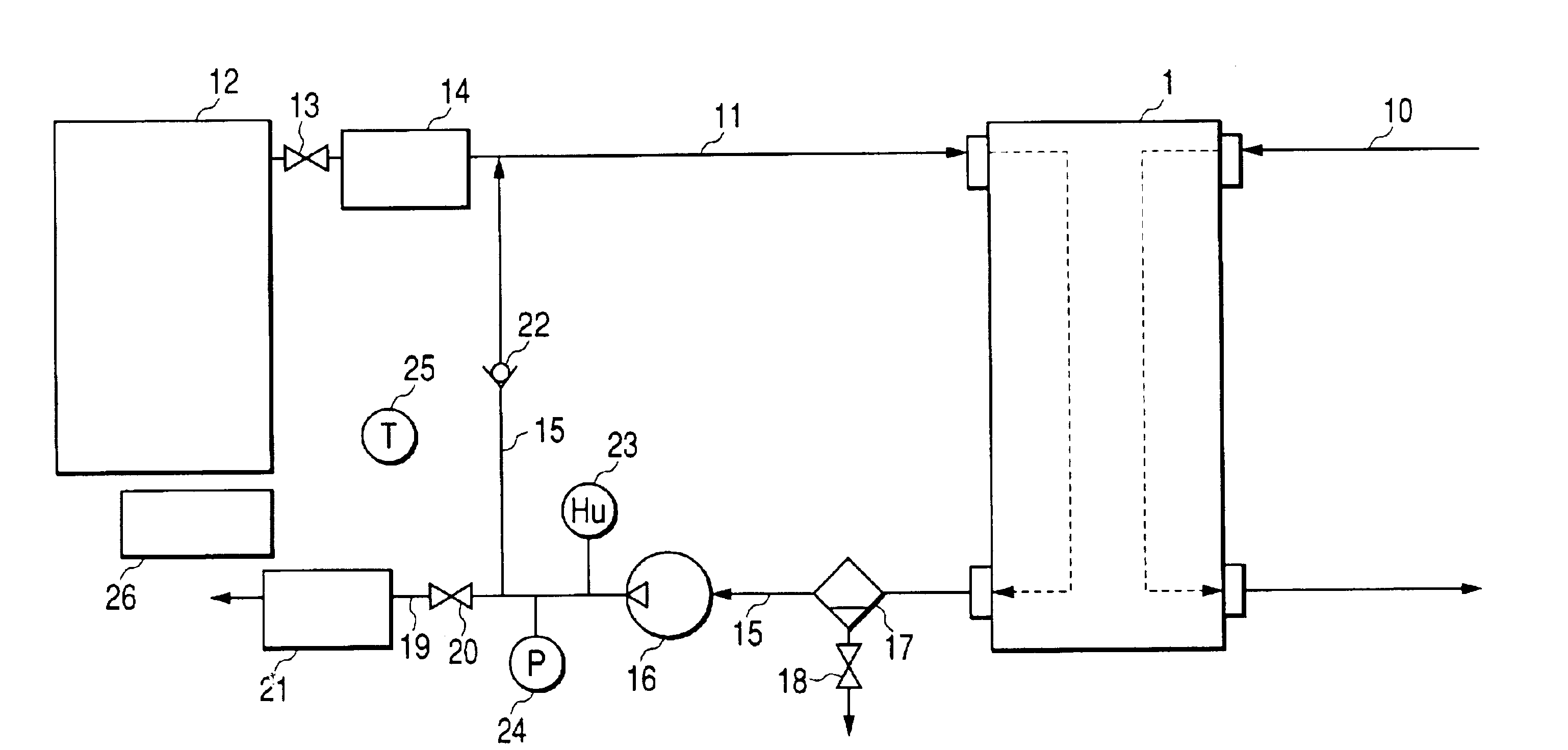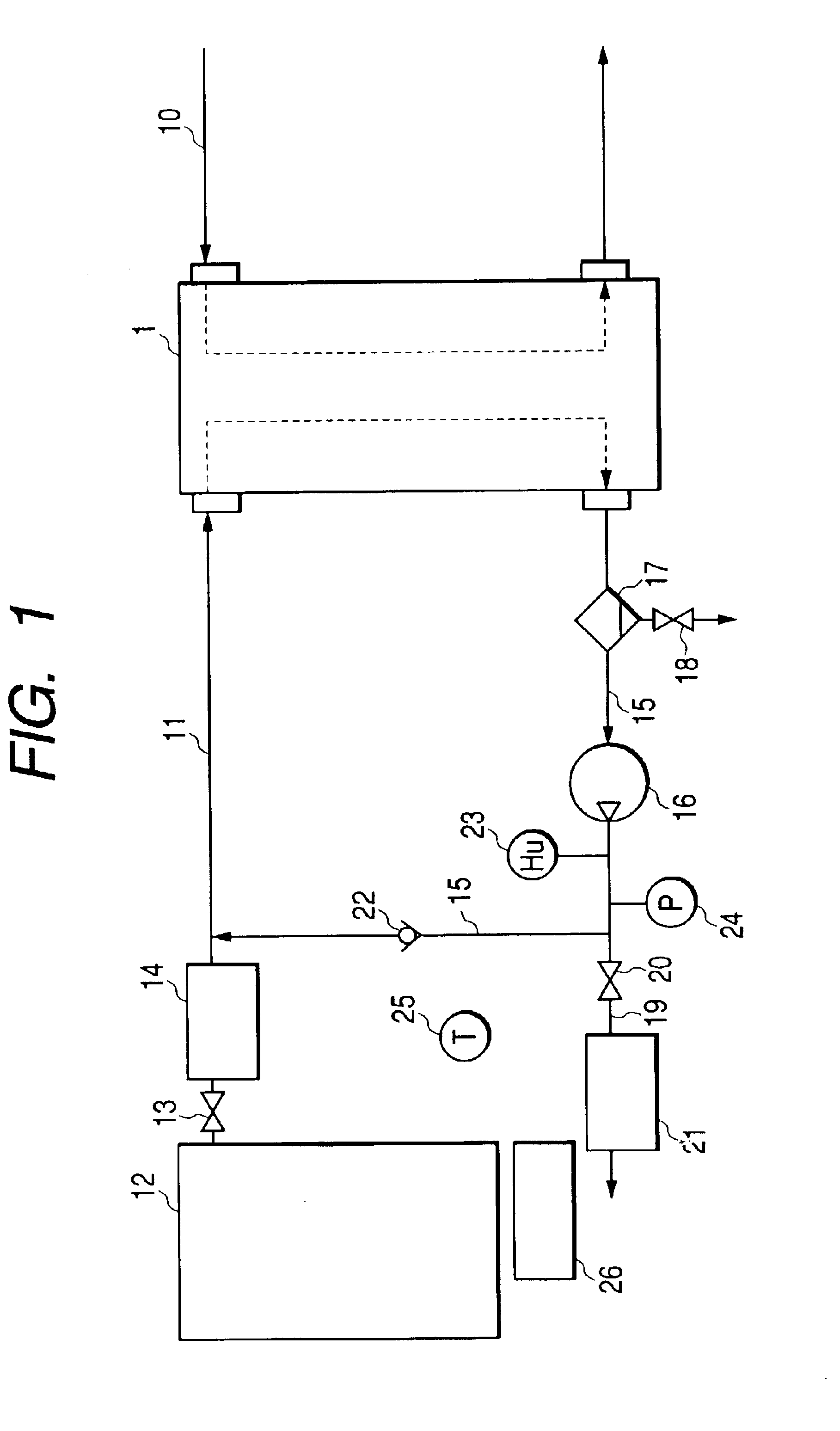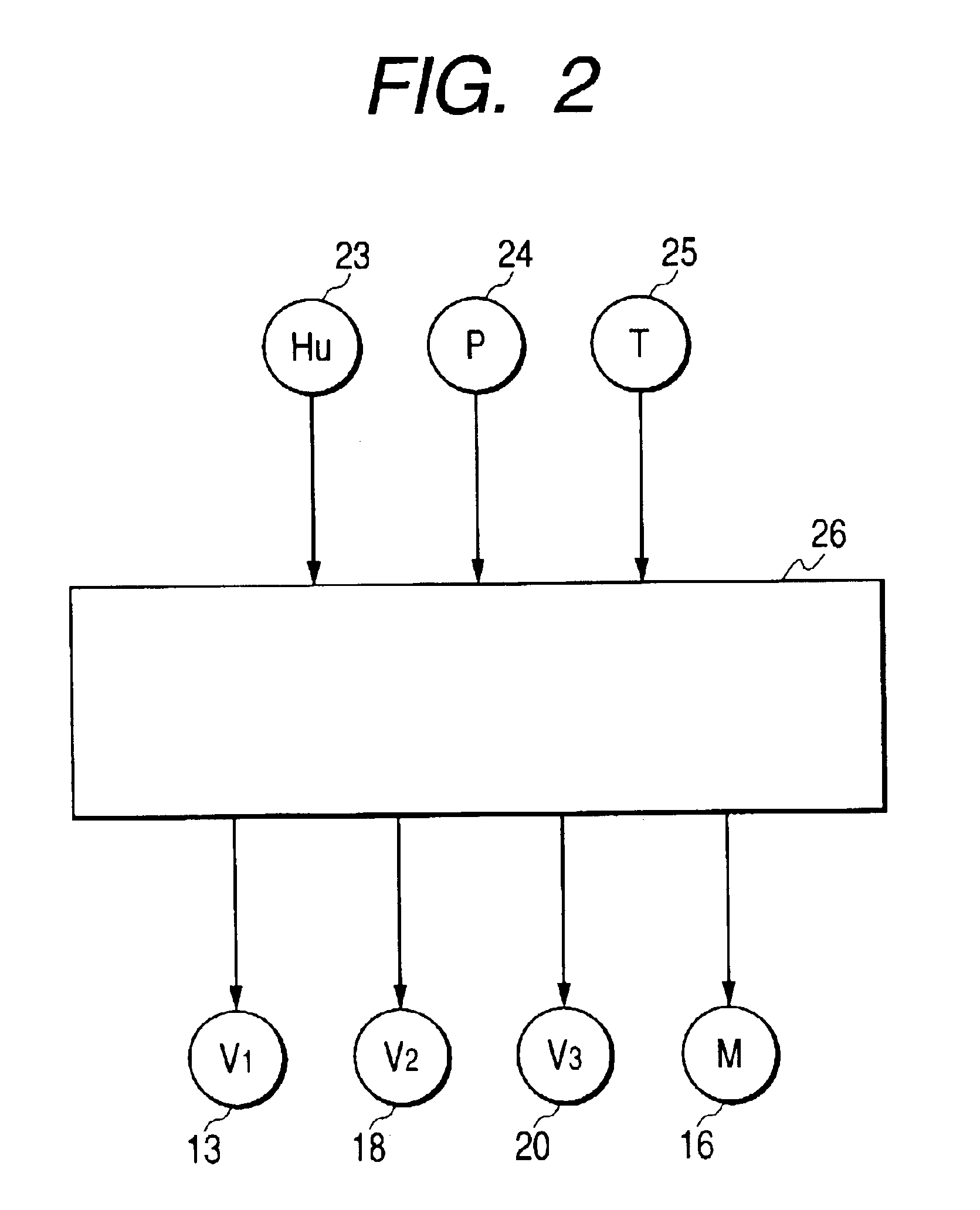Fuel cell system
a fuel cell and system technology, applied in the direction of fuel cells, solid electrolyte fuel cells, electrical equipment, etc., can solve the problems of preventable useless power consumption for freezing prevention processing, and achieve the effect of reducing the size of the fuel cell system and more effective gas-liquid separation
- Summary
- Abstract
- Description
- Claims
- Application Information
AI Technical Summary
Benefits of technology
Problems solved by technology
Method used
Image
Examples
first embodiment
(First Embodiment)
A first embodiment of the present invention will be described hereinbelow with reference to FIGS. 1 to 4. A fuel cell system according to this first embodiment is suitably applicable to, for example, an electric vehicle (fuel cell powered vehicle) using a fuel cell as an electric power source.
FIG. 1 is an illustration of the entire construction of a fuel cell system according to the first embodiment. A fuel cell (FC stack) 1 is designed to generate electric power through the use of electrochemical reaction between hydrogen and oxygen. In the first embodiment, a solid polyelectrolyte type fuel cell is employed as the fuel cell 1, and a plurality of cells each constitutes basic unit are formed into a laminated condition. Each of the cells is such that an electrolyte membrane is sandwiched between a pair of electrodes. The fuel cell 1 is made to supply electric power to electric equipment such as a driving motor or secondary battery (not shown). In the fuel cell 1, up...
second embodiment
(Second Embodiment)
Secondly, referring to FIG. 5, a description will be given hereinbelow of a second embodiment of the present invention. The parts corresponding to those in the above-described first embodiment are marked with the same reference numerals, and the description thereof will be omitted for brevity. The second embodiment will be described about only differences therefrom.
FIG. 5 is an illustration of the entire construction of a fuel cell system according to the second embodiment. As FIG. 5 shows, in the second embodiment, a decompression valve 27 is provided on the upstream side of a fuel cell 1 in a hydrogen supply path 11 in order to open / close a flow passage.
In this construction, in conducting the freezing prevention processing in the aforesaid step S14, the decompression valve 27 is closed and an off-gas emission valve 20 is opened and an off-gas pump 16 is further activated, thereby accomplishing the decompression between the decompression valve 27 and the off-gas ...
third embodiment
(Third Embodiment)
Furthermore, referring to FIG. 6, a description will be given hereinbelow of a third embodiment of the present invention. The parts corresponding to those in the above-described first embodiment are marked with the same reference numerals, and the description thereof will be omitted for brevity. The third embodiment will be described about only differences therefrom.
FIGS. 6A, 6B and 6C are illustrations of a construction of an off-gas pump 28 (28a) according to the third embodiment. Of these drawings, FIG. 6A is a cross-sectional view showing the off-gas pump 28 and FIGS. 6B and 6C are plan views showing a rotary plate.
As FIG. 6A shows, the off-gas pump 28 according to the third embodiment is integrated with a cyclone type gas-liquid separator. A gas-liquid separation rotary plate 28d is mounted over a drive shaft 28c of a motor 28b for a rotary pump 28a. An off-gas intake opening 28e is made above the drive shaft 28c in its an axial direction.
The rotary plate 28d ...
PUM
 Login to View More
Login to View More Abstract
Description
Claims
Application Information
 Login to View More
Login to View More - R&D
- Intellectual Property
- Life Sciences
- Materials
- Tech Scout
- Unparalleled Data Quality
- Higher Quality Content
- 60% Fewer Hallucinations
Browse by: Latest US Patents, China's latest patents, Technical Efficacy Thesaurus, Application Domain, Technology Topic, Popular Technical Reports.
© 2025 PatSnap. All rights reserved.Legal|Privacy policy|Modern Slavery Act Transparency Statement|Sitemap|About US| Contact US: help@patsnap.com



